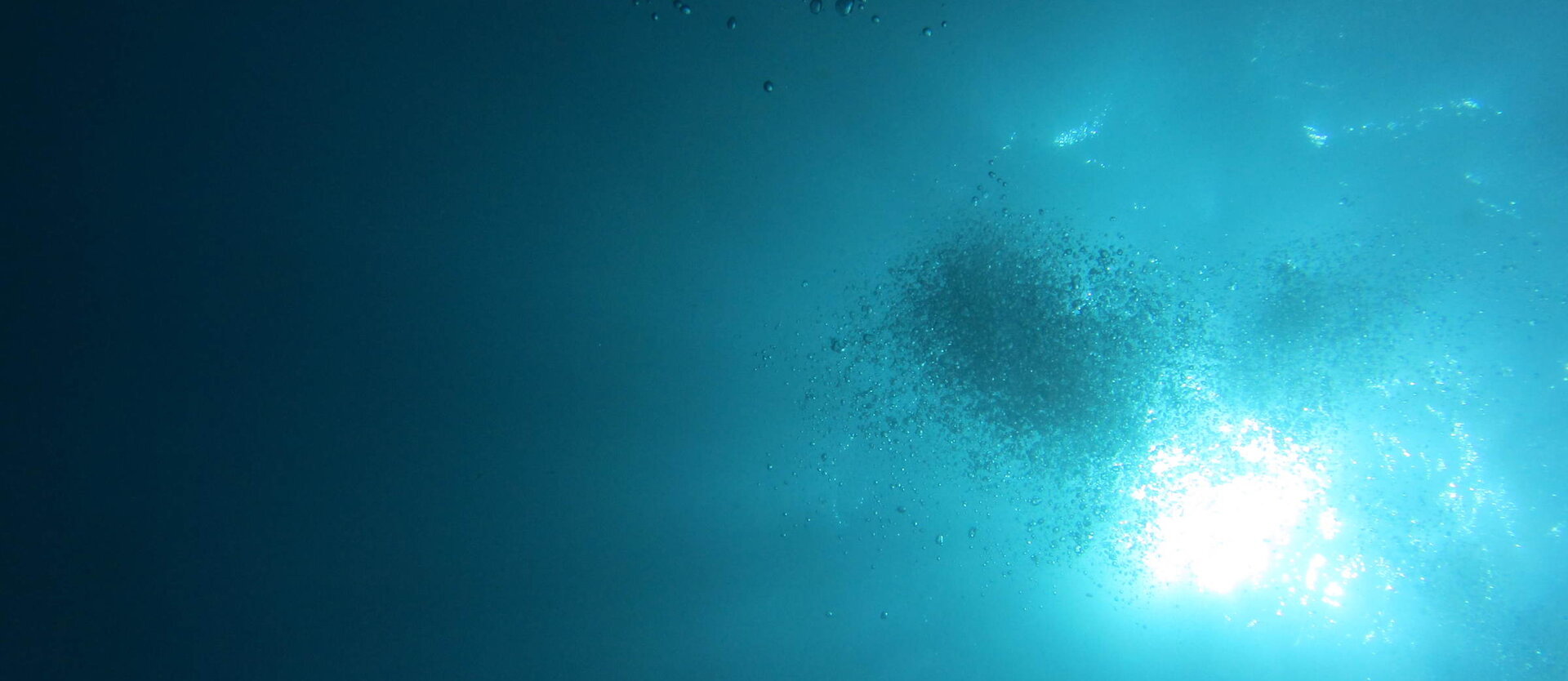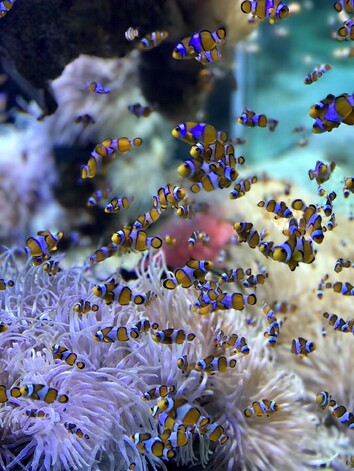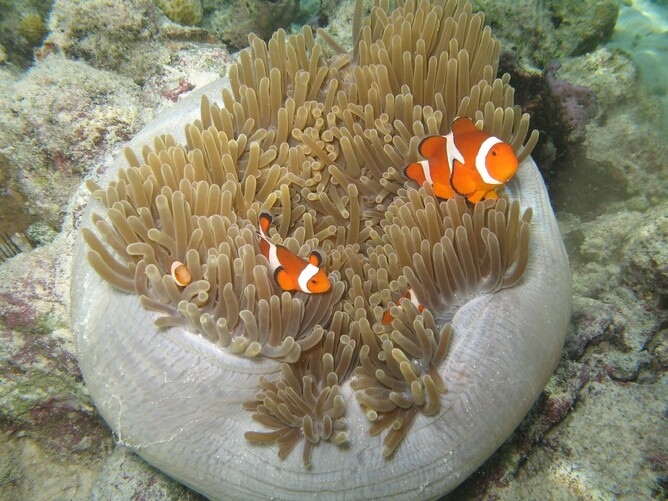This is part 2 to our fish reproduction blog! Fish are a diverse taxonomy, and sometimes they don’t always fit neatly into boxed categories - they’ve been around a long time and have used that time wisely. If you can believe it, there are even more ways that some species of fish reproduce!
The sexual strategies of fish fall into 1 of 4 combinations:
Monogamy
1 male: 1 female
Polygyny
1 male: multiple females
Polyandry
Multiple males: 1 female
Polygynandry
Multiple males: multiple females
Each method has different positives and negatives, some encourage better genetic diversity and others ensure better parental care or protection.
What is Parental Care?
Parental care is as simple as it sounds, but in the animal kingdom it's a big deal. Parental care in a scientific description is described as an investment by parents in offspring that increases the offspring’s chance of surviving, and therefore also reproducing. It sounds quite cold, but in fish their main instinct when reproducing is ensuring that their genes are carried on through the generations.
In fish, parental care is displayed in many forms, a lot of them mentioned in part 1 to this blog; territorial behaviours mostly but also: guarding, nest building, oral brooding, internal gestation and many others.
Parental care isn’t always as obvious as you think though. It’s easy to see the parent’s involvement when they’re making and protecting a nest, but it’s also slightly present in methods like open spawning. Because the eggs are not all concentrated in one area, there's a chance they could be overlooked by predators. We’ll admit, it’s a little unorthodox, but it works.
Some fish don’t need any outside help however, and prefer to do the brunt of the work themselves.
Hermaphroditism
Hermaphroditism is when a given species either possesses both male and female reproductive organs, or they are able to alternate between - having first one set of reproductive organs and then the other. It is very common in invertebrates but not so common in vertebrates. Most fish are gonochorists (remaining the same sex you were born throughout your life) however hermaphriditism occurs in 14 families of teleost fish.
The majority of the time, hermaphrodites are sequential. That means that they can switch sex - usually it’s females to males. This particularly happens when a dominant male is removed from a group of females - the largest of the females will switch to become the dominant male. This is seen in fish like groupers, parrotfish and wrasse.
In less common cases, hermaphrodites can be synchronous. This means that they possess both ovaries and testicles therefore they can function as both sexes. The sex of the fish is usually not fixed and will change depending on the social needs of the environment around them or will physical attributes (e.g. larger fish may be more likely to be a certain sex). The black hamlet fish will take turns releasing eggs or milt during spawning, and this allows for a lot of genetic diversity and as they are monogamous for short periods of time they trade eggs.
Hermaphroditism can be highly advantageous in fish, as some sexes may be more likely to survive than others - therefore more likely to reproduce. So if some die, they will not have to worry about finding a suitable mate - they can just make one! Anemone fish - like clown fish - are sequential hermaphrodites; they are born as males and will become female once they mature. They will in their harem in the anemone, and this means that there is low competition in the species as a new fish will just move in when one dies out.
Some fish are actually able to fertilise their own eggs! Because they possess both reproductive organs, they just do the job themselves. For example the mangrove rivulus produces their egg and sperm by meiosis. When the egg and sperm are made inside the fish’s body, the two unite and fertilise. When displayed in nature, this way of reproduction creates a line of highly homozygous individuals - they are all practically identical!
Inbreeding
You may be thinking ‘doesn’t this mean that fish are at risk of intense inbreeding?’ And you’d be right to be asking yourself that, it does make you think. Inbreeding is largely thought of as detrimental, even more so to the extreme case of self fertilisation. However many scientists have commented that self fertilisation does allow the species for fertilisation assurance with every new generation - even if their chances of detrimental recessive alleles expressing themselves are higher.
Unisexuality
This is a unique occurrence. Unisexuality is when a species is either all male, or all female. Sometimes it is referred to as parthenogenesis. You may think it is impossible for a fish species to exist like this, and it sounds it! A species of minnow found in spain is thought to be unisexual - they have been observed as being all-male. They originated as a hybrid between 2 other species of fish. Put in simple terms they will usually reproduce asexaully.
To fertilise the egg, many will use specialised cells from their own body, and at least 20 species of fish have been identified to be unisexual. There have been a few species of shark that were identified to be able to reproduce asexually, and we touched on this in our 'how do sharks reproduce' blog.
There is an odd special case branch of parthenogenesis, called gynogenesis. During this method, the egg is stimulated to begin developing simply by the presence of sperm. So although sperm is present, it does not actually contribute any genetic material to the egg and subsequently the offspring. To make sure that sperm is present, the female will mate with whatever male most closely related to her species. The amazon molly, a freshwater fish native to Mexico reproduces this way.
Overall, this method isn’t the best - it doesn’t allow for much genetic diversity, and the risk of detrimental mutations is much higher. However it does allow for the species to continue even if there are not suitable mates present.
Sexual Parasitism
This type of reproductive is unique to angler fish. In their case, the males are much smaller than the females, and when they reproduce he will attach himself to her for the rest of his life. He benefits as he gets protection and food from her, and the female benefits as she can use the male multiple times to fertilise her own eggs.
Because angler fish are found deep in the ocean, finding a mate is problematic. When scientists first started to catch and find anglerfish, they were confused as all of their specimens were female. They also observed that a lot of the specimens had what they thought to be a parasite attached to them. Upon closer investigation they found that they weren’t parasites, but they were in fact male anglerfish! When the male attaches himself to the female, he ‘reduces’ and appears even smaller - which is what first confused the scientists. They reduce so that they are not a strain on the female and it isn’t as much work for her to keep both herself and the male alive. This did indicate that anglerfish use the polyandrous system.
One theory for the adaptation of sexual parasitism is that because there are low levels of individuals in general in the deep sea ecosystems, let alone the anglerfish population (they aren’t exactly spoilt for choice), so it leaves very little opportunity for the males to reproduce. However, once he has attached himself, he is then guaranteed protection, food and being able to pass on his genetics. A further advantage is that the female is able to use the male multiple times to fertilise her eggs, because he is always available.
Enjoy this article and want to know more about Dive Bunnies?
Are you a new or novice diver and want to get more involved with Dive Bunnies? Why not join our Facebook Group and make some new friends - we would love to hear from you!





